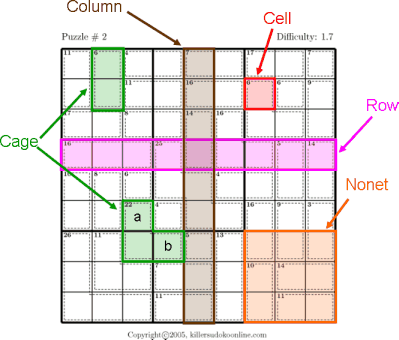Killer Sudoku Rules
Summary
The rules for Killer Sudoku are simple. The rules for regular
sudoku apply, with one additional rule: The sum of the cells in a cage
must equal the total given for the cage. Each digit in the cage
must be unique.
Terminology
|

|
Rules
As in regular sudoku, every cell in each row, column, and nonet must contain a unique digit. In other words, each row, column, and nonet must contain all the digits from one to nine.
The values of the cells a cage must sum up to the total for that cage.
The values of the cells in a cage must be unique.
Rules for Greater Than Killer Sudoku
The rules for Killer Sudoku apply. If there is a '>', '<', or, '=' between to cages, then the sum of the values in the cages must obey the relationship specified.
Rules for Greater Than Sudoku
The rules for regular sudoku apply. The values of each cell must obey the relationship between the cells specified with '>' or '<'.









